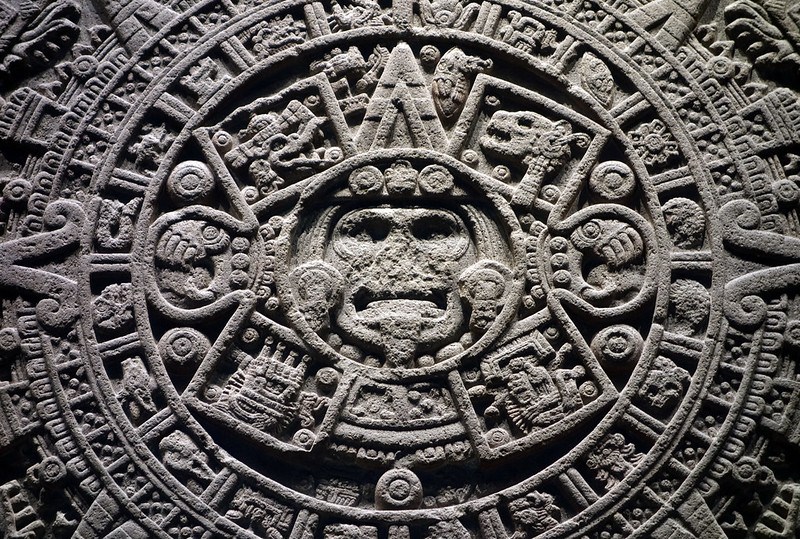Many of the things that Latin-Americans admire about Spain lose their luster when right-wing Spanish politicos and academics make insensitive and historically inaccurate comments about Latin America and its history. The idea that Spain brought civilization and liberty to a world made up of barbarian tribes is an article of faith among these people.
Isabel Díaz Ayuso, the president of the Madrid region and a rising star in Spain’s right-wing Partido Popular, recently questioned a statement of apology made by Pope Francis on the occasion of the Independence of Mexico, in which he recognized the errors of the Catholic Church in the former overseas dominions of the Spanish monarchy.
Ms. Díaz Ayuso rebuffed the Pope’s statement and warned against the “communists” and indigenists in Latin America who “attack” Spain’s legacy in the Americas. A legacy, in Ms. Díaz Ayuso’s words, of “liberty” and “civilization.”
Spain, she said, brought the Catholic religion to the New World, and Pope Francis, a native Spanish speaker, should have known better than to issue his apology. It tells you something about modern political dialogue in Spain when conservatives and right-wing demagogues raise their voices to contradict the Pope, the spiritual guide of the more than 27 million people in Spain who identify as Catholic.
But let us leave that aside and look at Ms. Díaz Ayuso’s claims that Spain brought “liberty” and “civilization” to Mesoamerica. To start, it is necessary to dispense with the idea that Hernán Cortés and his men arrived in New World to “conquer” an empire. This is palace history written in the 16th-century by men who never set foot in the Americas.
Once in the mainland, Cortés and his band of marauders successfully carved out a role for themselves in what was essentially an inter-tribal war. The natives who came across these bearded vagabonds were obviously impressed by their horses and weapons. But it was the militant Tlaxcaltecs, sworn enemies of the Mexicas, who found a use for them. When the Tlaxcaltecs marched against Tenochtitlán and its sister cities they brought Cortés and his men along with them, and everyone knows what the outcome of that battle was.
Hernán Cortés, an avid letter writer to the King of Spain, paints himself as a humble and obedient servant of God and the monarchy. But he was little more than a mercenary with a talent for treachery; a son-of-nothing (hijo de nada) with a knack for self-publicity who had the good fortune to find himself in a land of warring tribes with the right weapons in hand; one who stayed long enough after the battle of Tenochtitlán to give orders to a demoralized native population. Picture an opportunistic Ostrogoth general who stays behind in a smoldering Rome after the Ostrogoth king has retreated to greener pastures to enjoy his plunder.
Screenwriters, right-wing academics and imperial nostalgics will be disappointed, but there was no “Spanish conquest” of Mesoamerica. This is historiographic nonsense that does not stand scrutiny. It would be useful to put together an updated bibliography to challenge such views and opinions and finally put them to rest.
But since we don't have the space or the time to do this, let us take a quick walk across the historic center of Mexico City to look for these traces of “civilization” and “liberty” that Ms. Díaz Ayuso speaks of.
A few streets away from the Metropolitan Cathedral, facing the historic plaza of Santo Domingo, is an old palace with a coat of arms above its stately entrance. This was the palace of the Spanish Inquisition. Hewed in stone, the coat of arms shows an olive branch and a sword.
The Dominican inquisitors who came to Spanish America sometimes gave an olive branch to their unfortunate victims — the heretics, Lutherans and marranos (the Jews) — but they never failed to confiscate their possessions, which means that every stone on that palace was paid for with stolen silver.
Why send the accused to the stake (which they sometimes did) when you can steal their wealth? Was this the pastoral “liberty” that Ms. Díaz Ayuso speaks of?
It is well known that there were religious sacrifices in the ancient city of Tenochtitlán. Not as well known is the fact that these sacrifices continued throughout colonial times. What changed were the methods: the new rulers and tribute takers dispensed with the sacrificial stones and obsidian knifes used to sacrifice prisoners of war before the altar of Huitzilopochtli, god of the sun, but in their place (and just a few streets away) they lit pyres to burn heretics at the stake. A spectacle for which the friars of the Convent of San Diego made their church tower available so that Spanish grandees could have a clear view without having to mix with all the barefooted indios and poor Spaniards who climbed the trees of the Alameda to see accused. An interesting way to bring “civilization” to your new flock of believers.
The next stop in our tour of the historic center is a small church on a street known as República de El Salvador, not far from the main square, or Zócalo. Here lies buried Hernán Cortés. His remains were put in a box and placed behind a wall marked with a small plaque.
Cortés felt so good about his prospects of going to Heaven, that, on his deathbed, he commissioned a group of friars to say hundreds of masses on his behalf, presumably to shorten his stay in purgatory. Such was his guilt after all the death and destruction of the so-called Conquest (the battle of Tenochtitlán), that he commissioned the building of a hospital for the orphaned natives, the Hospital de Jesús on the same city block, the oldest in the Americas, a place that still offers medical services to the public.
Does this mean we should feel grateful towards Hernán Cortés and his total destruction of the old city, glimpses of which we can still see in the murals of Diego Rivera? Tenochtitlán was what we would now call a sustainable city filled with waterways used to transport people and goods, a place that did not overexploit the natural resources it had access to. A city that, in the space of a century and a half, became a dusty colonial town with poor sanitation that resembled all those down-on-their-luck towns back in Castilla-La Mancha; a place prone to flooding as a result of all the shoddily planned works that the Spaniards undertook to drain the waterways and plow the nearby fields.
This was a severe architectural downgrade for the old city and a heinous cultural crime. Gone were the waterside palaces and buildings built by the Mexicas, the stones carted away by slave labour to build all those Renaissance theaters that the friars called “churches”. Thatched-roof constructions where the friars told the story of the Nazarene and his martyrdom at the hands of unscrupulous people, a tale that was bound to appeal to the demoralized natives who had been ill-treated themselves and whose gods had been ground to dust.
Our next stop is a street known as Calle de Moneda, right beside the Presidential Palace, formerly the Viceroy’s palace, where the Royal Mint of New Spain used to be. The mint was the place where silver bullion was converted into coin and the only reason why the Spanish court took an interest in its overseas dominions.
I wonder what Ms. Díaz Ayuso has to say about all those peons who were employed as slave labour in the mines of the New World. The luckless natives who were herded into encomiendas against their will to grow crops, raise livestock and dig for silver for the Spanish kings, the wherewithal to pay for their wars of conquest and religion back in Flanders, Italy and beyond.
As late as the time of Felipe III and the Count-Duke of Olivares, the king’s all-powerful advisor (1630s), Spanish America was still regarded as a giant silver mine. The only news from overseas these two men cared for were news of the galleons that had arrived in Cadiz with the plunder.
Gloom descended on the Spanish court when the ships failed to arrive on time. Dutch privateers, the will of God, or both? If Spain was indeed engaged in a “civilizing” mission overseas, as Ms. Díaz Ayuso believes, these two men were certainly not aware of it.
Which brings us to our last two stops in our quick tour of Mexico City. The museum built beside the ruins of the Templo Mayor, the center of the Aztec world, and the National Museum of Anthropology in Chapultepec Park.
I am surprised that a university-trained Spaniard such as Ms. Díaz Ayuso, someone who has reached the upper echelons of the country’s political establishment, and who is said to be a candidate for the top job in the Partido Popular, would say that it was Spain that brought civilization to the Americas. If this is the case, what was there before Cortés arrived with his harquebuses, crosses and deadly germs? If Ms. Díaz Ayuso were to spend a few minutes in either of these two museums, she would quickly come to the realization that the native peoples of the Americas were not barbarians or noble savages.
One can spend many days discovering these collections, filled as they are with wonders and stories of lost worlds. Among them is the famous Sun Stone and a statue known as the Coatlicue, one of four statues that used to stand atop the Templo Mayor, where the sacrifices took place. To stand before the statue of Coatlicue, mother of Huitzilopochtli and Earth goddess of fertility, and to dismiss it as barbarian art is an act of barbarism itself, something that brings to mind the Taliban blowing up statues of the Buddha.
The officials of the Crown and the friars were so terrified of the Coatlicue after it was re-discovered in the late 18th century, that they dug a hole for it again to keep the vast servant class (the indios) away from its malefic influence.
This is what people like Ms. Díaz Ayuso still see when confronted with these unparalleled examples of human craftsmanship; they see what the old colonial officials and soldiers of fortune like Cortés saw: winged devils and serpents whose names they can't even pronounce, which is why Huitzilopochtli became Huichilobos (“Wolf-life god”) in the writings of the early Spanish chroniclers.
This only shows Latin-Americans that some people in Spain never learnt their own country’s history. The good news is that many people did. Latin-Americans, for their part, also need to recognize some of the good things that came after the arrival of the Spaniards (educational opportunities, for instance, and a degree of social mobility within the clerical establishment), which is what President López Obrador has trouble doing, and why he makes many politicians in Spain angry. They are right to say that he should “move on” and focus on the problems of present-day Mexico.
Finally, we also take note of the fact that it was the Spaniards who took Latin American history seriously who brought liberty and democracy to modern-day Spain. These conscientious Spaniards and the country they want to build as part of Europe are the reason why many Latin-Americans will always nurture their bonds of affection for Spain — our late-medieval motherland.


